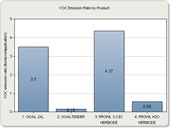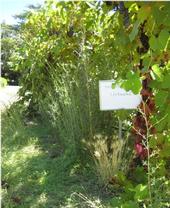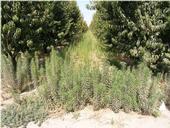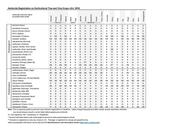- Author: Brad Hanson

Earlier this month, I attended the 2011 Plant and Soil Conference which was held in Fresno this year. This annual meeting put on by the California Chapter of the American Society of Agronomy (http://calasa.ucdavis.edu/ ) usually has several sessions during the two-day program designed to update Certified Crop Advisors, Pest Control Advisors, and other professional agronomists on current research and regulatory issues. One of the speakers in the Environmental Quality Session, Pam Wofford from CDPR, spoke about reducing emissions of Volatile Organic Compounds (VOC) from pesticides by switching formulations. I thought I’d touch on that issue today.
There are a number of definitions of...
- Author: Brad Hanson

Today I thought I would post a brief writeup and a poster presentation by Amit Jhala, a recent postdoctoral researcher in the UCD weed group. Amit and I put out two small experiments in the spring of 2010 to evaluate combinations of glyphosate (Roundup WeatherMax) plus various residual herbicides in a walnut orchard near Davis and a vineyard near Winters, CA.
All treatments included 2 lb ae/A glyphosate The residual materials included:
- penoxsulam (to be registered alone as "Tangent" and is one of the active ingredients in "Pindar GT")
- indazaflam (to be registered as...
- Author: Brad Hanson

This week I received an email request for information on the soil concentration of herbicide necessary to have a phytotoxic effect. This is a simple-sounding question and I was able to confidently say “Well, that depends….”.
Of course this isn’t a simple question at all because of the great differences among herbicides, soil types, environments, and in plant susceptibility not to mention complicated interactions among the factors. As an example, in the herbicide treatment table IPM guidelines for Pear (http://www.ipm.ucdavis.edu/PMG/r603700311.html) it is obvious that herbicides can be active at quite different concentrations. In this table, there is up to a...
- Author: Brad Hanson

*This was an article that Doug Munier and I put together and tweaked for a couple orchard crop newsletters in summer/fall 2010. I thought I'd repost it here for posterity... Brad
Controlling Glyphosate-Resistant Weeds in Orchards with Rely:
Understanding the Issue and Managing the Solutions
Brad Hanson, UC Weed Extension Specialist, Davis
Doug Munier, UC Farm Advisor, Glenn, Butte, and Tehama Counties
By now, many tree fruit and nut producers in the Central Valley are familiar with glyphosate-resistant weed species. In the north Sacramento Valley, glyphosate resistant ryegrass is...
- Author: Brad Hanson

I am a Cooperative Extension Weed Specialist at UC Davis and decided to start this blog as a bit of an extension experiment. Technology changes have given us new opportunities to share knowledge and I thought I’d join in the fray – we’ll see where it leads!
Some people may not know what a CE Specialist does (I wasn’t either before becoming familiar with the UC system). In my version of the job, I conduct applied research in weed management and ecology and extend this information to farmers and other folks in production agriculture. In many other University systems, I would be a Professor with a Research and Extension appointment (I do not have a teaching appointment).
My research program currently focuses on control...


